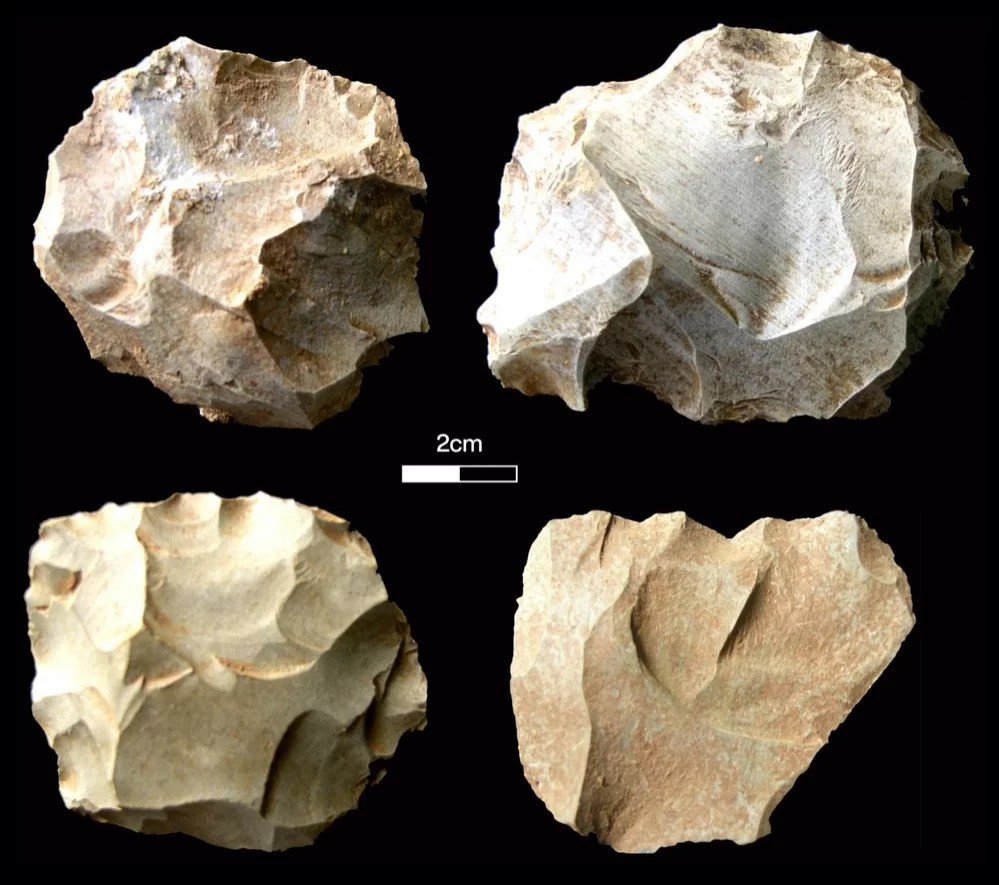New archaeological work supports the hypothesis that human populations were present in India 80,000 years ago and that they survived one of the largest volcanic eruptions in the last two million years
The Toba super-eruption was one of the largest volcanic events in the last two million years, some 5,000 times larger than the Mount Saint Helens eruption in the 1980s. The eruption occurred 74,000 years ago on the island of Sumatra. , Indonesia, and it was argued that it had given rise to a volcanic winter which lasted six to ten years, causing a cooling of the Earth's surface for 1,000 years. Theories held that the volcanic eruption would have caused great catastrophes, including the decimation of the populations of hominids and mammals in Asia, and the near extinction of our own species. It was said that the few Homo sapiens that survived in Africa did so by developing sophisticated social, symbolic, and economic strategies that allowed them to eventually re-expand and populate Asia 60,000 years ago in a single rapid wave along the Indian Ocean coast.
Fieldwork in southern India in 2007 by some of the authors of this study challenged those theories, leading to significant debate among archaeologists, geneticists, and Earth scientists about the timing the dispersal of humans out of Africa and the impact of the Toba super-eruption on climate and the environment. The present study continues the debate, providing evidence that Homo sapiens was present in Asia earlier than expected and that the Toba super-eruption was not as apocalyptic as previously believed.

The present study reports a unique 80,000-year-old stratigraphic record from the Dhaba site in the Middle Son Valley of northern India. Stone tools discovered at Dhaba in association with the time of the Toba event provide strong evidence that Middle Palaeolithic tool-using populations were present in India before and after 74,000 years ago. Professor J.N. Pal, a senior researcher at the University of Allahabad, India, points out that although Toba ash was first identified in the Son Valley in the 1980s, until now we had no associated archaeological evidence, so the Dhaba site fills an important chronological gap .
Professor Chris Clarkson of the University of Queensland, lead author of the study, adds:Dhaba populations used stone tools similar to those used by Homo sapiens in Africa at the same time. The fact that these toolkits did not disappear at the time of the Toba super-eruption nor did they change drastically shortly thereafter indicates that human populations survived the so-called catastrophe and continued to create tools to modify their environments .
This new archaeological evidence supports the fossil evidence that humans migrated from Africa and spread across Eurasia before 60,000 years ago. It also supports genetic findings that humans interbred with archaic hominin species, such as Neanderthals, before 60,000 years ago.

Although the Toba super-eruption was a colossal event, few climatologists and earth scientists still support the original formulation of the volcanic winter scenario. , suggesting that Earth's cooling was milder and that Toba may not have actually caused the subsequent glacial period. Recent archaeological evidence in Asia, including the finds unearthed in this study, does not support the theory that hominin populations became extinct because of the Toba super-eruption.
Instead, archaeological evidence indicates that humans survived and endured one of the largest volcanic events in human history, showing that small groups of hunter-gatherers adapted to changing environments. However, the peoples who lived around Dhaba more than 74,000 years ago do not appear to have contributed significantly to the gene pool of contemporary peoples, suggesting that these hunter-gatherers likely faced a number of challenges to their long-term survival. , including the dramatic environmental changes of the following millennia. Summarizing the broader implications of this study, Professor Michael Petraglia of the Max Planck Institute says:The archaeological record shows that while humans sometimes display a remarkable level of resilience to challenge, it is also evident that people did not always prosper in the long run .
